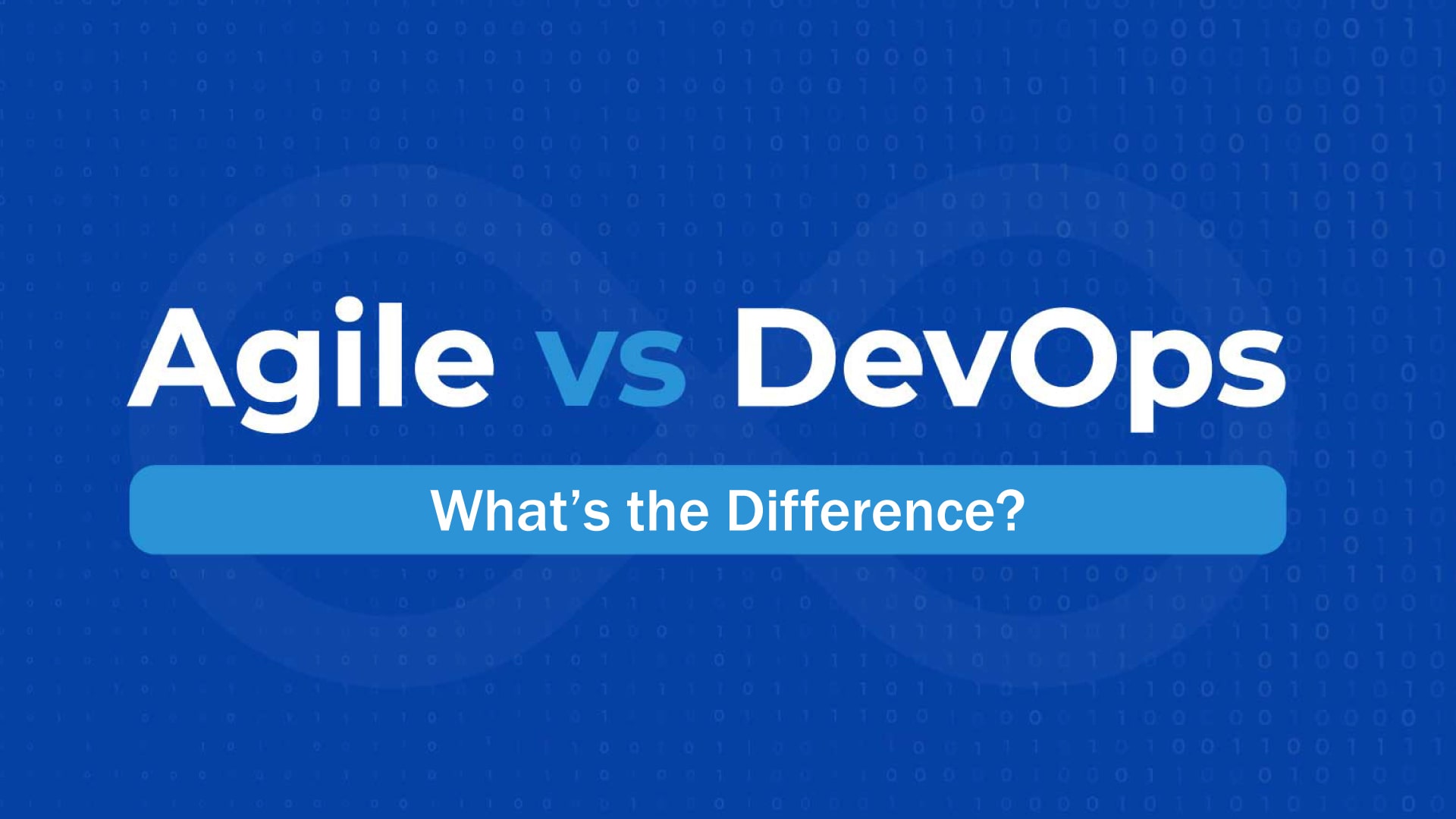Agile vs. DevOps: What’s the Difference?

In the fast-paced world of software development, methodologies and frameworks are crucial to delivering quality products efficiently. Two of the most popular approaches are Agile and DevOps. While both aim to enhance the development process, they have distinct principles and practices. This blog will explore the differences between Agile and DevOps, their core principles, and how they complement each other in modern software development.
Understanding Agile
Overview:
Agile is a methodology focused on iterative development, where requirements and solutions evolve through collaboration between self-organizing cross-functional teams. It emphasizes flexibility, customer feedback, and rapid delivery of functional software.
Core Principles of Agile
1. Customer Collaboration Over Contract Negotiation: Agile prioritizes ongoing collaboration with customers to understand their needs and adapt to changes.
2. Responding to Change Over Following a Plan: Agile embraces changes in requirements, even late in the development process, to provide a competitive advantage.
3. Working Software Over Comprehensive Documentation: The primary measure of progress is working software that meets customer needs.
4. Individuals and Interactions Over Processes and Tools: Agile values team interactions and individual contributions over rigid adherence to processes and tools.
Agile Frameworks and Practices
1. Scrum: A framework within Agile that uses fixed-length iterations called sprints, usually lasting 2-4 weeks, with defined roles (Product Owner, Scrum Master, Development Team) and ceremonies (Daily Stand-ups, Sprint Planning, Sprint Review, Retrospective).
2. Kanban: A visual approach to manage workflow and improve efficiency, focusing on continuous delivery without overburdening the team.
3. Extreme Programming (XP): Emphasizes technical practices such as Test-Driven Development (TDD), Continuous Integration, and Pair Programming to improve software quality and responsiveness to changing requirements.
Understanding DevOps
Overview of DevOps
Understanding customer behavior and preferences is crucial for delivering personalized experiences and building long-term relationships. Data analytics helps businesses gain deep insights into customer interactions and satisfaction levels.
Core Principles of DevOps
1. Automation: Automating repetitive tasks such as testing, integration, deployment, and infrastructure provisioning to improve efficiency and reduce human error.
2. Continuous Integration and Continuous Deployment (CI/CD): Regularly integrating code changes into a shared repository (CI) and automatically deploying code to production environments (CD) to ensure rapid delivery of updates.
3. Collaboration and Communication: Breaking down silos between development and operations teams to foster a culture of collaboration, transparency, and shared goals.
4. Monitoring and Feedback: Implementing robust monitoring and feedback mechanisms to quickly identify and resolve issues, enhancing system reliability and performance.
DevOps Tools and Practices
1. CI/CD Tools: Jenkins, GitLab CI, CircleCI for automating integration and deployment processes.
2. Configuration Management: Tools like Ansible, Puppet, Chef to automate infrastructure provisioning and configuration.
3. Containerization: Docker and Kubernetes to create portable, consistent environments for development, testing, and deployment.
4. Monitoring and Logging: Tools like Prometheus, Grafana, ELK Stack (Elasticsearch, Logstash, Kibana) for real-time monitoring and log analysis.
Key Differences Between Agile and DevOps
Scope amd Focus
1. Agile: Primarily focuses on the development process, emphasizing iterative progress, collaboration, and customer feedback.
2. DevOps: Encompasses the entire software delivery lifecycle, including development, testing, deployment, and operations, aiming for continuous delivery and operational efficiency.
Team Structure and Roles
1. Agile: Involves cross-functional teams with defined roles (Product Owner, Scrum Master, Development Team) focused on delivering specific increments of functionality.
2. DevOps: Emphasizes collaboration between traditionally separate development and operations teams, with a shared responsibility for the end-to-end delivery process.
Process and Practices
1. Agile: Utilizes iterative cycles (sprints), with practices such as daily stand-ups, sprint planning, and retrospectives to manage progress and adapt to changes.
2. DevOps: Focuses on automation, continuous integration and deployment (CI/CD), infrastructure as code (IaC), and continuous monitoring to ensure rapid, reliable delivery of software.
Culture and Mindset
1. Agile: Encourages a flexible, adaptive approach to development, prioritizing customer satisfaction and team collaboration.
2. DevOps: Promotes a culture of collaboration, shared responsibility, and continuous improvement across the entire software delivery pipeline.
How Agile and DevOps Complement Each Other
While Agile and DevOps have distinct focuses, they are complementary practices that, when combined, can significantly enhance the software development process.
1. Agile provides the framework for iterative development and customer feedback, ensuring that the product meets user needs and can adapt to changing requirements.
2. DevOps extends these principles to the entire delivery pipeline, emphasizing automation, continuous delivery, and operational efficiency, ensuring that the product can be reliably and quickly deployed to production.
By integrating Agile and DevOps, organizations can achieve a more cohesive and efficient development process, from initial concept to final deployment and beyond.
Conclusion
Agile and DevOps are both essential methodologies in modern software development, each with its own unique principles and practices. Understanding the differences and how they complement each other can help organizations optimize their development processes, improve collaboration, and deliver high-quality software more efficiently. By leveraging the strengths of both Agile and DevOps, businesses can stay competitive and responsive in today’s fast-paced technological landscape.







